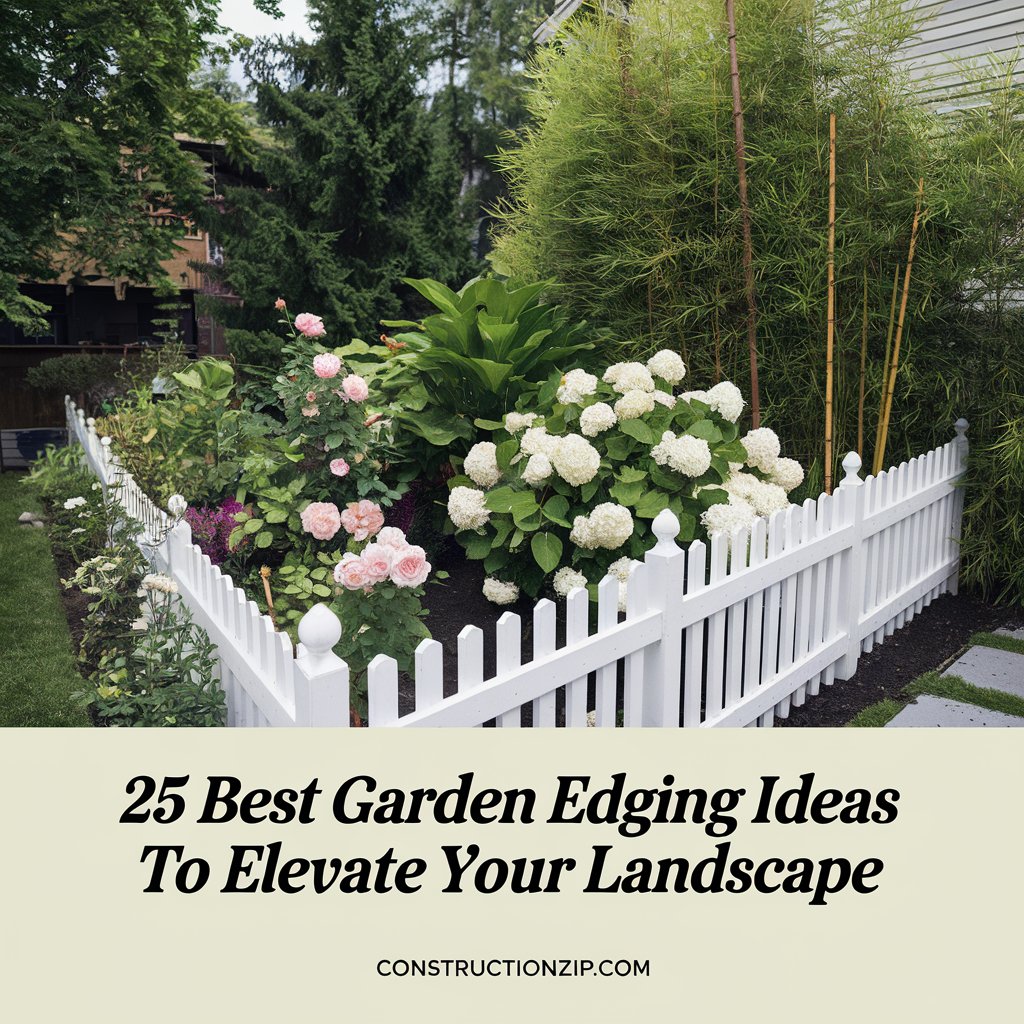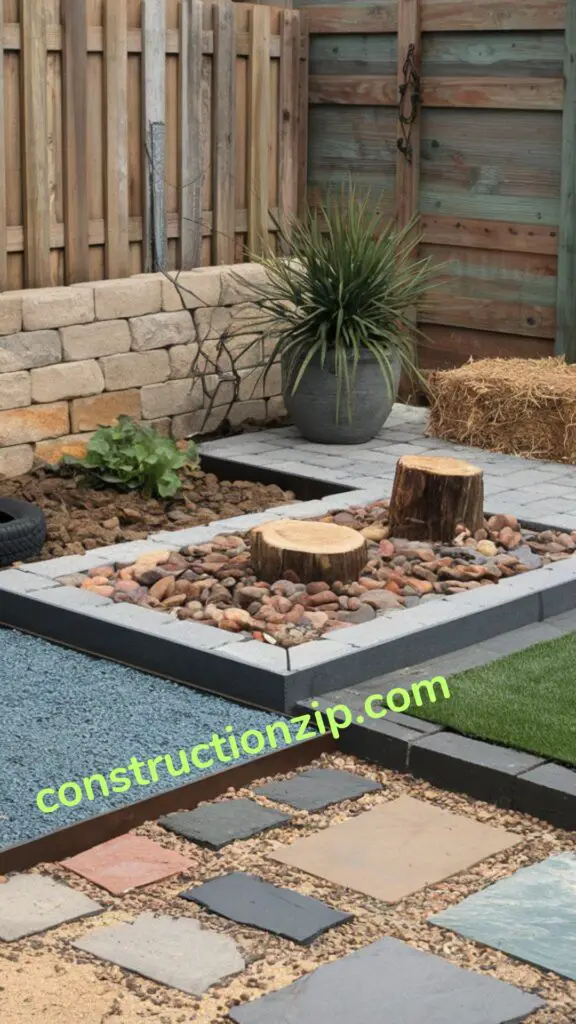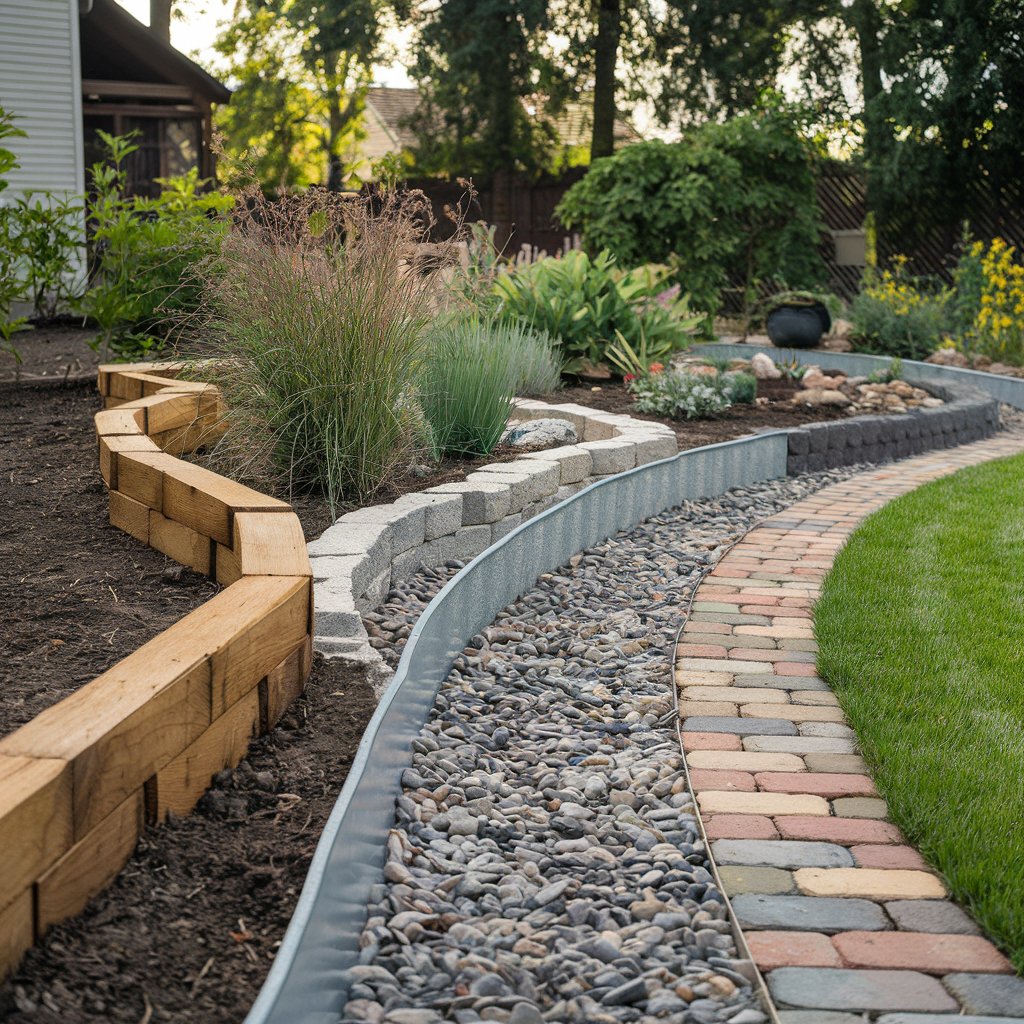Keep your garden looking professional and polished with these creative ideas.
If you’re planning to revamp your garden for the next season, adding a garden edge can provide that extra touch of beauty and functionality. A defined edge around garden beds, pathways, or seasonal flower displays not only enhances curb appeal but also keeps your garden looking tidy and well-maintained.

Why Garden Edging Matters
Edging plays a crucial role beyond just looks; it helps keep grass from growing into flower beds, prevents soil erosion, and minimizes mulch runoff. Plus, edging serves as a protective barrier for delicate plants against accidental contact with lawn tools. With a variety of materials like wood, stone, and metal, you can choose a style that complements your garden’s unique aesthetic.
Here are 25 garden edging ideas to help you achieve a beautiful, long-lasting landscape.
1. Plastic Edging
Plastic is affordable and durable, making it a practical choice for garden edging. Sold in rolls, plastic edging requires a trench to secure it in place. Enlist a helper to make installation easier, as the rolls can be challenging to handle alone.
2. Gravel Edging
Gravel edging is simple yet effective. Start by digging a trench, laying down landscape fabric, and filling it with gravel. This method is budget-friendly and allows for flexibility in shape.
| Steps | Details |
|---|---|
| Dig trench | Minimum 4 inches deep |
| Lay landscape fabric | Anchor with fixing pegs |
| Fill with gravel | Rake for even distribution |

3. Glass Bottle Edging
For an eco-friendly touch, recycle glass bottles as garden edging. Arrange bottles upside down in the soil to create a quirky, personalized border.
4. Raised-Garden Bed Edging
Raised garden beds around trees or flower beds on slopes add a pop of color and structure. For a professional look, consider hiring a landscaper for this more complex project.
5. Recycled Rubber Edging
Made from durable recycled rubber, this type of edging can be pegged into place without digging. Ideal for mowers, rubber edging provides long-lasting protection and a sleek appearance.
6. Stone Pillar Edging
Stone pillars provide a classic look for edging, but it can be labor-intensive. For a curved design, use individual stones and secure them with a rubber mallet.
7. Stone and Gravel Combo
For a natural, rustic look, combine large stones with gravel. Start by digging a trench, laying plastic edging, then filling with gravel and adding stones on top for a sturdy finish.
8. Eucalyptus Wood Border
Eucalyptus wood brings a relaxed, coastal feel to your garden. Use a rubber mallet to secure wood edging, which works especially well in warm, tropical climates.
9. Flagstone Edging

Flagstone is a versatile choice that can be laid flat or stacked for a cottage-style border. This is a great option for edging flower beds and creating paths.
10. Metal Edging
Metal edging is durable and easily shaped, making it ideal for curved garden layouts. Simply hammer into the ground for installation, and be sure to wear gloves to protect your hands.
11. Weathering Steel Edging
Weathering steel, or corten steel, weathers to a rustic brown and lasts a lifetime. Installation can be tricky, but it adds a timeless, natural look to any garden.
12. Poured Concrete Edging
Concrete edging offers durability and a clean, professional look. Since mistakes can be hard to fix, it’s best to hire a professional to create a form and pour the concrete.
13. Brick Edging
Brick provides a classic, polished look. Place bricks in a trench on their side or upright for a structured edge. Using a rubber mallet helps ensure they are even.
| Brick Installation Tips | Details |
|---|---|
| Use a rubber mallet | Ensures bricks stay level |
| Add a string level | Keeps bricks in a straight line |
14. Living Hedge Edging
Boxwood hedges offer an English-garden feel to your space. Plant close together for a dense, uniform look, and trim regularly to maintain shape.
15. Paver Stone Edging
Pavers are durable and work well for garden paths and edging. However, they’re heavy to handle, so plan ahead for multiple days of installation.
16. Natural Log Edging

Use large branches or tree trunks as edging for a rustic garden vibe. This natural material will last for years and adds a woodsy charm.
17. Cedar Edging
Cedar shingles or shakes create a soft border around garden beds. They’re easy to install but may not last as long as more durable options.
18. Landscape Timber Edging
Pressure-treated timbers are cost-effective and resistant to rot. They require leveling the ground before installation, which helps create a smooth, uniform edge.
19. Hand Edging
For a clean look without materials, simply use an edging shovel or electric edger to create sharp lines in the soil. This technique requires yearly maintenance but gives a neat, professional appearance.
20. Natural Rock Edging
Rocks come in a variety of colors and shapes, making them ideal for creative edging. Try lining your flower beds with medium-sized stones to add depth and interest.
Each of these edging ideas offers unique benefits, from ease of installation to aesthetic appeal, making it easy to find the perfect option for your garden. Explore, experiment, and enjoy the process of transforming your outdoor space with garden edging!